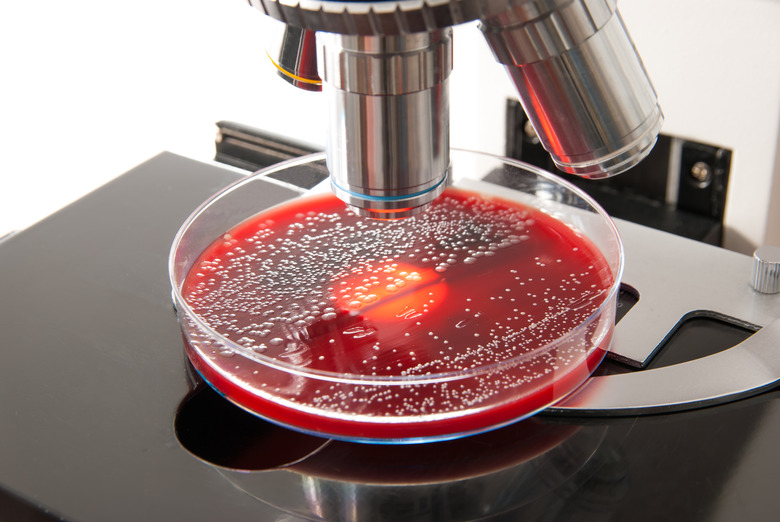What Is Arrangement In Microbiology?
Microorganisms are single-celled creatures like bacteria, fungi or mold. These organisms tend to reproduce and grow in groups, so instead of looking at each cell on its own, microbiologists study the arrangement of the cells. The arrangement of colonies of organisms like bacteria allows microbiologists to identify them, because these microorganisms tend to grow in specific patterns.
Bacterial Shapes
Bacterial Shapes
Bacteria typically come in one of three shapes — round, rod or spiral. Round bacteria, known as cocci, or coccus for one cell, might also appear oval, elongated or flat on one side. Bacilli, or the singular bacillus, are rod-shaped organisms that can also look so short and thick that they are called coccobacillus. Spiral bacteria can look curved, when they are called vibrios, or have several twists — spirilla have rigid bodies while spirochetes are flexible. While these three basic shapes are the main ones bacteria assume, pleomorphic bacteria can have various shapes like those of squares or stars.
Classifying Arrangements
Classifying Arrangements
Bacteria are arranged in patterns, the most common of which are diplo, staphylo, strepto, tetrad and sarcina; these arrangements can be applied to the various bacterial shapes. Diplo refers to two cells, so diplococci are arrangements of cocci in pairs. Streptobacilli are bacilli in chains. Staphylococci are cocci arranged in irregular clusters, like a bunch of grapes. A tetrad is a group of four cells arranged in a square, and sarcina are arranged in cubes of eight cells. Cocci can be arranged in all these forms: bacilli can be single, streptobacilli or coccobacilli; and spiral bacteria come in the forms vibrio, spirillum and spirochete.
Morphology
Morphology
Microbiologists can also identify bacteria through their colony morphology, or the appearance and characteristics of the bacterial colony. While arrangement refers to the groupings of individual cells, morphology describes the appearance of groups of bacteria, or colonies. Colony shapes can be round, irregular, filamentous or curled. Colonies might be flat or have a rounded elevation. The surface of a colony can appear smooth, shiny, rough or dull, and the opacity might be transparent, opaque or translucent.
Arrangements of Other Microorganisms
Arrangements of Other Microorganisms
While arrangement in microbiology typically refers to bacteria, other microorganisms tend to arrange their cells into specific shapes. Fungi, for example, can appear as multicellular filamentous molds, macroscopic filamentous fungi (often called mushrooms) or single-celled yeasts. Molds are made up of threads called hyphae; the cells of molds continue to reproduce to form chains. The hyphae form groups of threads called mycelia (singular mycelium). Macroscopic fungi also form mycelia, but they also produce visible structures like mushrooms or toadstools that hold spores, enabling the fungi to reproduce. Yeasts reproduce by budding daughter cells from a parent cell.
Cite This Article
MLA
Batema, Cara. "What Is Arrangement In Microbiology?" sciencing.com, https://www.sciencing.com/arrangement-microbiology-16400/. 13 March 2018.
APA
Batema, Cara. (2018, March 13). What Is Arrangement In Microbiology?. sciencing.com. Retrieved from https://www.sciencing.com/arrangement-microbiology-16400/
Chicago
Batema, Cara. What Is Arrangement In Microbiology? last modified March 24, 2022. https://www.sciencing.com/arrangement-microbiology-16400/
